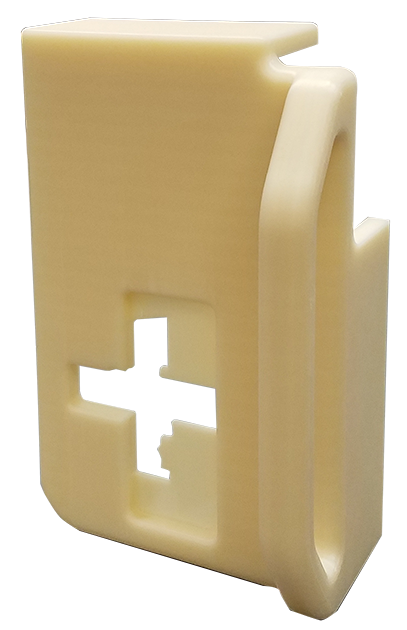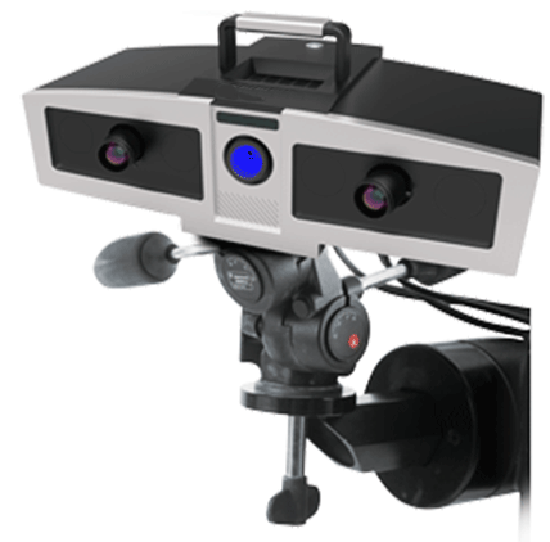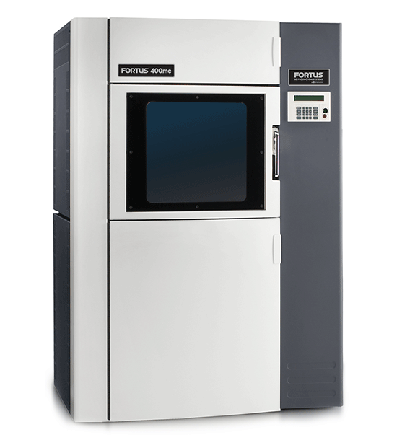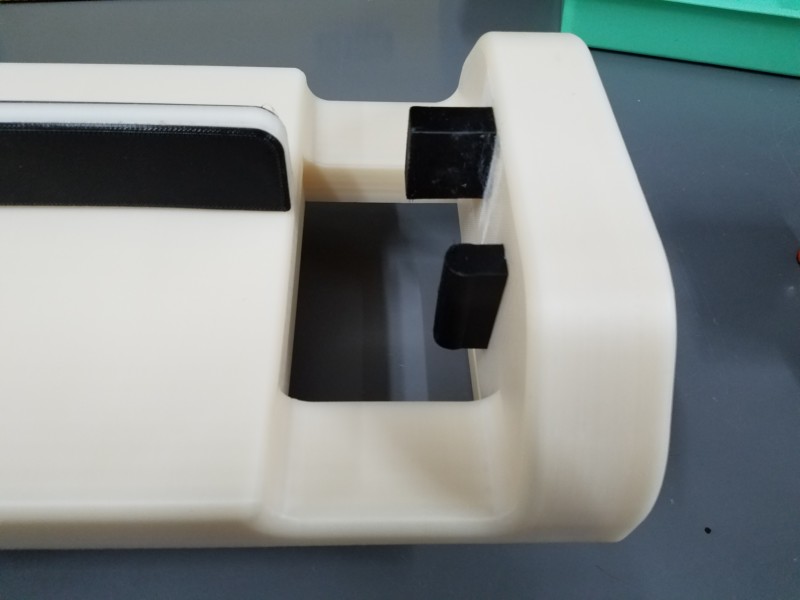Whirlpool Case Study
A descriptive paragraph that tells clients how good you are and proves that you are the best choice that they’ve made.

Whirlpool gets parts faster and cheaper with 3D printing
Whirlpool is a leading manufacturer of home appliances, including washers, dryers, heating and cooling units, freezers, refrigerators, and more. They provide consumers with smart, efficient appliances that make everyday life easier.

Challenge
Whirlpool manufactures many different appliances and each must have an emblem bearing the Whirlpool logo. These emblems are placed by hand in the production line. To ensure uniform positioning and alignment, Whirlpool made custom fixtures to aid employees with this task.
These fixtures were originally machined from plastic, but the cost of machining each fixture was thousands of dollars. Whirlpool engineers realized that 3D printing could produce these fixtures at a fraction of the cost of machining. They began 3D printing the fixtures at their in-house 3D printing facility at their headquarters in Michigan, but this facility had a lead time of 12-16 weeks due to the fact that it services all of Whirlpool’s plants.
This long lead time was exacerbated by the need to make the fixtures non-marring so they would not scratch the surface of the appliance during use. After waiting months for their parts, Whirlpool employees still had to take the time to apply a felt-like material to the contact surface fixture. Further still, this felt material was prone to tearing and falling off of the fixture, requiring that it be removed and reapplied.
Whirlpool decided to find an outside vendor who could 3D print their parts faster and help them find a better solution for making the fixtures non-marring. Ideally, they wanted to be able to order these parts from a single vendor and receive them in 1-2 weeks, ready to be used with the non-marring coating already applied and that’s exactly what they got from 3 Space.

Solution
With our array of industrial 3D printers and extensive experience with a variety of projects, 3 Space was just the partner Whirlpool needed. Our focus is providing quality 3D printing services for anything from one-off prototypes to production runs. With our engineers’ expertise and our top-of-the-line equipment, we were ready to meet Whirlpool’s needs.
Design
For some of their fixtures, Whirlpool already had CAD ready to be 3D printed, but for older fixtures the CAD was lost and they only had the physical part. And for their newest appliances, the fixture was yet to be designed. 3 Space was prepared to solve these challenges.
For the older fixtures, we 3D scanned and reverse engineered the physical part, creating ready-to-print CAD. And for the newer models, Whirlpool sent us the CAD for the appliance, which our in-house engineers used as the basis for the fixture design.

3D Printing
At 3 Space, fast lead times are what we pride ourselves on. With our fleet of industrial FDM 3D printers we are able to ship most 3D printing orders within 5 business days and Whirlpool was no exception. We were able to cut their lead time down from 3-4 months to just one week.
We were also able to reduce the cost by 3D printing them with sparse infill rather than solid. Their in-house 3D printing facility had been using solid infill thinking the added strength was necessary. In reality, this caused the fixtures to be heavy, making them tiring to use all day and causing them to break under their own weight when dropped. Switching to solid weight made them much lighter, less likely to break, more cost-effective and still durable enough to do the job.

Non-Marring Surface
Dissatisfied with the delicate felt material they had been using, Whirlpool wanted to replace it with a spray-on rubber from a particular vendor they had found. After we 3D printed the first fixture for them, we shipped it to this vendor to have the rubber coating applied. The fact that this coating was to be applied only to certain portions of the contact surface required that areas be masked off. The results were poor with careless masking, significant overspray and uneven thickness. Fortunately, we were able to provide a better solution.
Having just added TPU to our lineup of 3D printing materials, we thought this would be an excellent application. We designed the non-marring surface of each fixture as a separate component to be 3D printed separately and then glued to the main fixture. This allowed us to make this surface a uniform thickness and covering only the areas that needed to be covered. This proved to be a fast, cost-effective and durable solution.
Reordering
Because they could now reliably order their fixtures from a single vendor and have them arrive, ready to use, in just a few days, Whirlpool was able to reduce the number of fixtures they kept on-hand. They also added the fixtures to their automated stockroom system where they are automatically re-ordered from 3 Space when their inventory gets low.

Whirlpool gets parts faster and cheaper with 3D printing
Whirlpool is a leading manufacturer of home appliances, including washers, dryers, heating and cooling units, freezers, refrigerators, and more. They provide consumers with smart, efficient appliances that make everyday life easier.

Challenge
Whirlpool manufactures many different appliances and each must have an emblem bearing the Whirlpool logo. These emblems are placed by hand in the production line. To ensure uniform positioning and alignment, Whirlpool made custom fixtures to aid employees with this task.
These fixtures were originally machined from plastic, but the cost of machining each fixture was thousands of dollars. Whirlpool engineers realized that 3D printing could produce these fixtures at a fraction of the cost of machining. They began 3D printing the fixtures at their in-house 3D printing facility at their headquarters in Michigan, but this facility had a lead time of 12-16 weeks due to the fact that it services all of Whirlpool’s plants.
This long lead time was exacerbated by the need to make the fixtures non-marring so they would not scratch the surface of the appliance during use. After waiting months for their parts, Whirlpool employees still had to take the time to apply a felt-like material to the contact surface fixture. Further still, this felt material was prone to tearing and falling off of the fixture, requiring that it be removed and reapplied.
Whirlpool decided to find an outside vendor who could 3D print their parts faster and help them find a better solution for making the fixtures non-marring. Ideally, they wanted to be able to order these parts from a single vendor and receive them in 1-2 weeks, ready to be used with the non-marring coating already applied and that’s exactly what they got from 3 Space.

Solution
With our array of industrial 3D printers and extensive experience with a variety of projects, 3 Space was just the partner Whirlpool needed. Our focus is providing quality 3D printing services for anything from one-off prototypes to production runs. With our engineers’ expertise and our top-of-the-line equipment, we were ready to meet Whirlpool’s needs.
Design
For some of their fixtures, Whirlpool already had CAD ready to be 3D printed, but for older fixtures the CAD was lost and they only had the physical part. And for their newest appliances, the fixture was yet to be designed. 3 Space was prepared to solve these challenges.
For the older fixtures, we 3D scanned and reverse engineered the physical part, creating ready-to-print CAD. And for the newer models, Whirlpool sent us the CAD for the appliance, which our in-house engineers used as the basis for the fixture design.

3D Printing
At 3 Space, fast lead times are what we pride ourselves on. With our fleet of industrial FDM 3D printers we are able to ship most 3D printing orders within 5 business days and Whirlpool was no exception. We were able to cut their lead time down from 3-4 months to just one week.
We were also able to reduce the cost by 3D printing them with sparse infill rather than solid. Their in-house 3D printing facility had been using solid infill thinking the added strength was necessary. In reality, this caused the fixtures to be heavy, making them tiring to use all day and causing them to break under their own weight when dropped. Switching to solid weight made them much lighter, less likely to break, more cost-effective and still durable enough to do the job.
